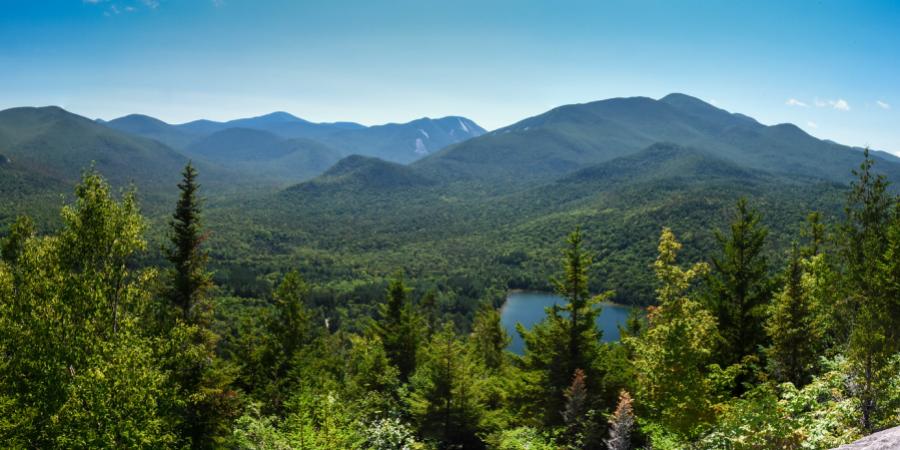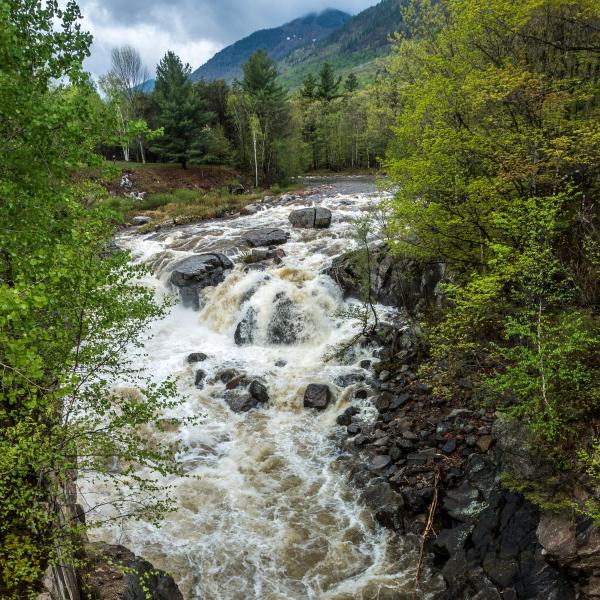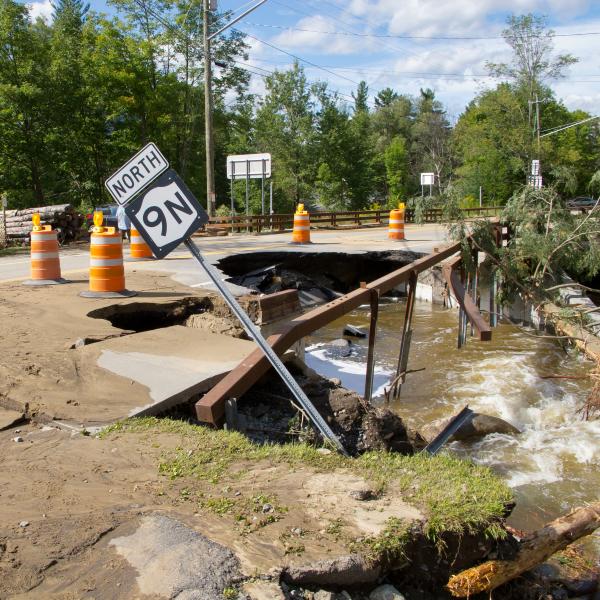A couple of weeks ago, I found a quiet weekday morning to hike Baxter Mountain (from route 9N). I've driven past it hundreds of times but have never stopped. There always seem to be too many cars at the trailhead for my taste. But that morning, I finally decided to see what drew in the crowds. Reaching the summit, I realized that the main draw is accessibility of the trailhead and the relatively small amount of effort required for beautiful views at the top. Though I enjoyed the classic Adirondack views, what really got my attention was the use of switchbacks up the mountain. This is a rare find in the Adirondacks, where most trails run straight up the mountain. This led me to take a closer look at trail building and design when I returned home.
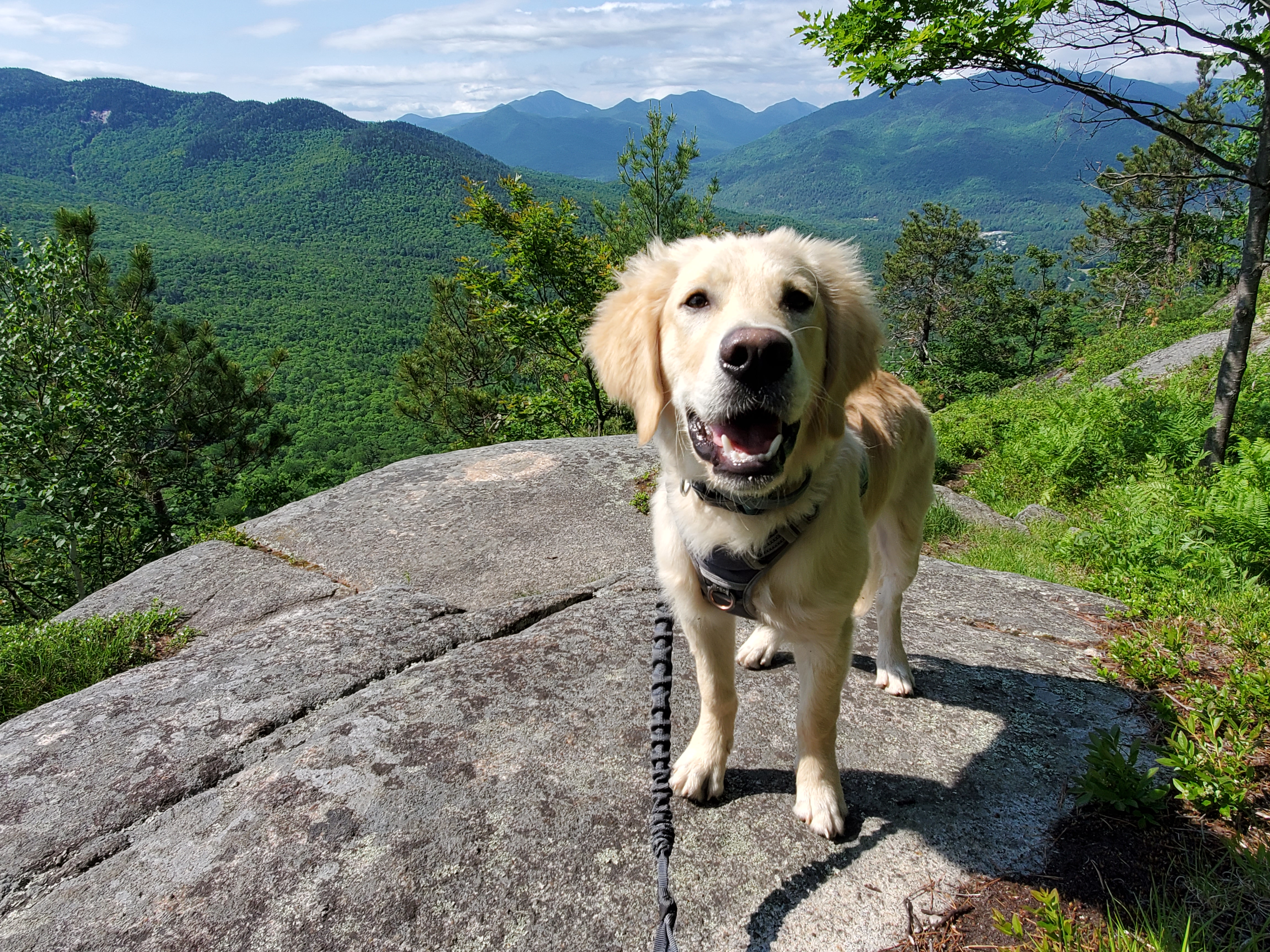
Otis, Assistant River Steward, on Baxter Mountain.
Trail History
The Adirondack Mountains are ancient and many of the trails we use today were built a century ago or more. Long before trail design and trail crews existed, early surveyors, such as Verplanck Colvin, began defining our mountain trails. Their goal was to reach the peak of the mountain, triangulate to the other summits, and create maps. They did what made sense at the time, taking the most direct route to the summit. These paths were followed by guides and over time, these steep, rugged trails became synonymous with the Adirondacks. Many of these trails are still in use today. They look nothing like they did when they were created, however. This is because of erosion. The steep trails that follow the quickest path to the summit also provide the easiest path for water to flow down the mountain. The resulting erosion can leave trails and the natural resources that surround them deteriorated. Not only is the local ecosystem degraded by this soil loss and disruption but the aquatic ecosystems where the soil ends up are affected as well.
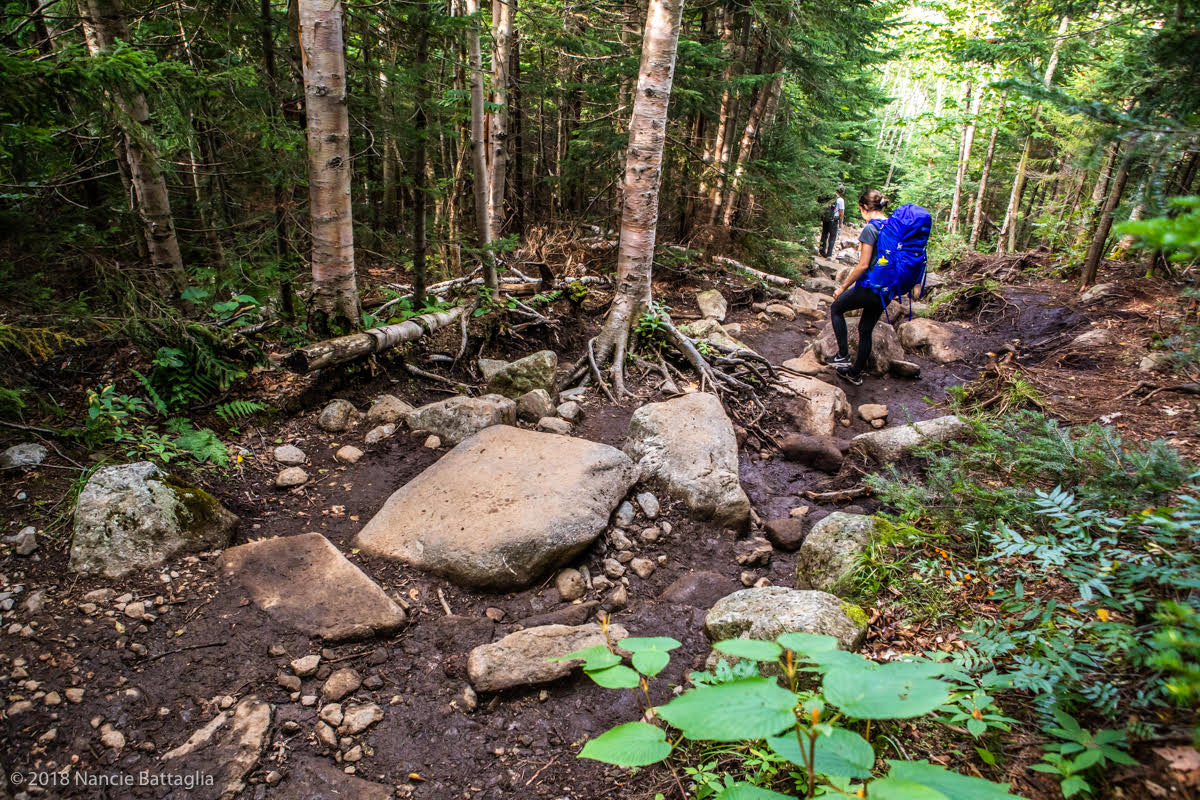
This trail up Algonquin Mountain is an example of the eroded trails often found in the Adirondacks. Photo credit: Nancie Battaglia.
These same rugged trails are what bring thousands of people to the area each year. Many of these visitors venture to the High Peaks region where beautiful wild places are accessible to practically everyone. Unfortunately, the ever-increasing number of people in these popular areas puts extra pressure on the already deteriorating trails. Hikers often create new paths that avoid the muddy, rocky, and root-filled sections of the path that were created through erosion. This creates a wider corridor, increasing the human impact in these wilderness areas. In short, the trails that are used to enjoy the forests and wildlife that surround them are degrading these same ecosystems. There are two methods that can help the Adirondacks with this issue: sustainable trail building and responsible trail use.
What is Sustainable Trail Building?
The short answer is designing and constructing trails that shed water, hold up to high volumes of hikers, and have minimal impact on the surrounding wilderness and wildlife. For example, a more gradual trail is less likely to be eroded. The slope of the mountain cannot be changed but increasing the length of the trail can create a path that is less steep. Switchbacks are generally used to accomplish this goal. Water is less likely to follow this back-and-forth path down the mountain when there is a steeper, more direct route. Adding drainage features, such as water bars, to the trail re-routes any water that does travel down the trail. Creating a hardened tread in the primary trail bed is another strategy. A trench is created along the path and filled with crushed stone that helps stabilize the trail while allowing water to pass through. The crushed stone is topped with a layer of mineral soils that are compacted to create the hardened tread. They are further stabilized by boulders lining one or both sides of the trail. To achieve these goals, the trail often has to be completely rerouted and rebuilt. This may mean closing down the trail for a season or longer. While this can be inconvenient at the time, the goal of these trails is for them to last for a long time and require less maintenance.
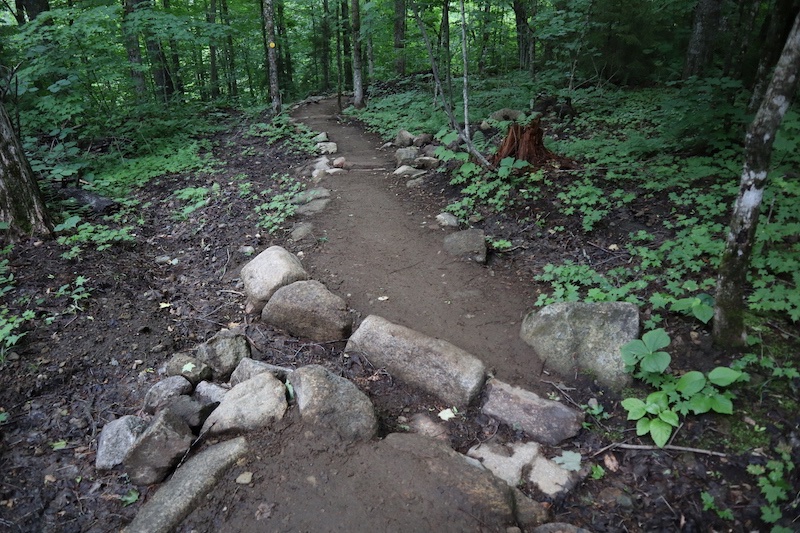
A section of the new sustainable trail on Mt. Van Hovenberg, featuring hardened treads and water drainage.
Local Sustainable Trails
Sustainable trail building is happening here in the High Peaks region. In 2018, a new trail for Mt. Van Hoevenberg was started with these methodologies in mind. This trail is designed to withstand heavy use while also protecting the surrounding forests and wildlife. Another new trail is under construction for Cascade peak out of the same trailhead. Both of these trails make use of switchbacks, drainage features, narrower, hardened treads and locally-sourced, natural materials. Baxter and Jay Mountains are examples of other trails in the area that have also been rebuilt in the past several years with sustainability in mind. There are, however, still hundreds of miles of trails in the Adirondack Park that are in poor shape and threatening the ecosystems they cut through.
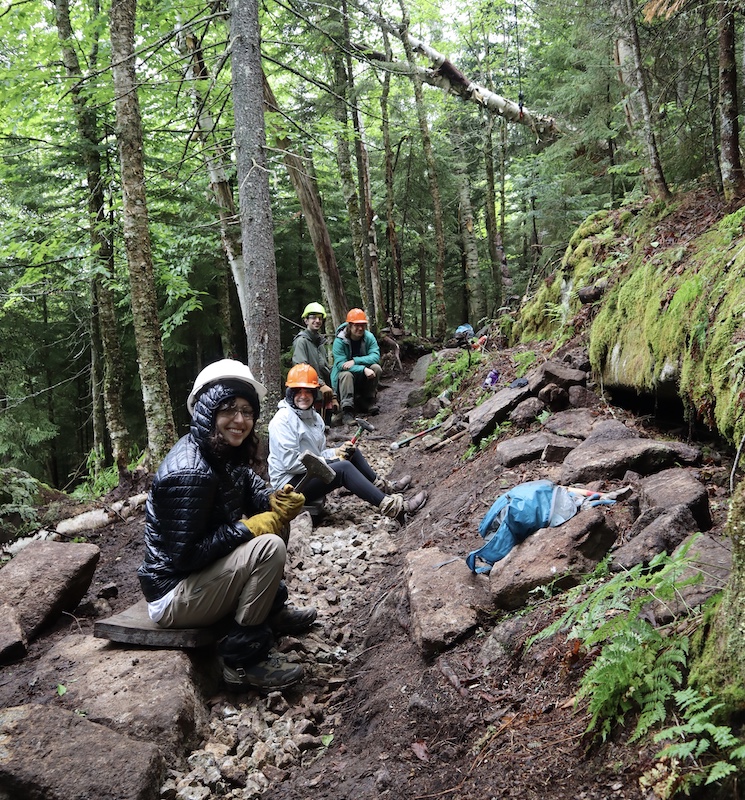
A trail crew working on the new Mt. Van Hovenberg East trail.
Sustainable trail building requires expertise, but anyone can pursue responsible trail use. It is not the solution to the problem of degrading trails, but it can certainly help. Responsible trail use can mean many things and may depend on the area. If a trail has already been rebuilt sustainably, don't take shortcuts. Some hikers cut switchbacks rather than follow the longer path. The more people that do that, the more the cutoff looks like the actual trail and even more people use it. This is reverting the trail back to the steeper version that is great at carrying water, causing erosion, and harming ecosystems. Those few seconds saved are not worth the damage that it can cause to the ecosystem that make the trail special. Straying off the path also harms the plants and wildlife in that area. This is especially true for fragile alpine vegetation.
Support our goal of promoting responsible, low impact recreation to protect Ausable waterways and adjacent lands. Give with confidence today!
For places where the trails are in poor shape, you can choose to go to other trails that are in better condition or that are not as busy. Mud season is a time when trails are particularly vulnerable to erosion from users. During this time, the NYS Department of Environmental Conservation will close trails to help protect both the trails and natural systems. It is important to respect those closures and to avoid any trail that is especially muddy. Wherever or whenever you hike, checking current regulations can give you important information about trail conditions, camping options, restricted areas, and bringing dogs along. Finally, follow leave no trace principles. One of these is to travel and camp on durable surfaces to minimize your impact on the surrounding land for the sake of both the plants and wildlife in the area as well as the hikers that come after you.
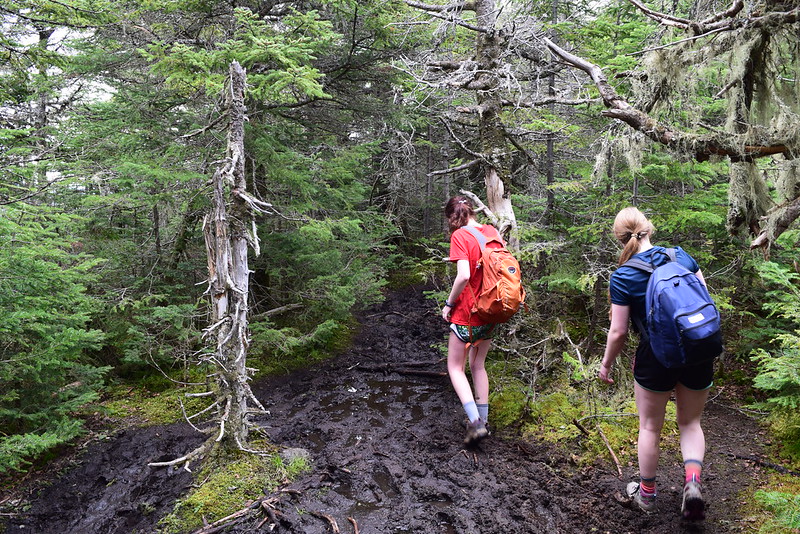
Hikers walking on vulnerable, muddy trails cause damage to the trail and surrounding ecosystems. Photo credit: Flickr
People are flocking to the Adirondacks now more than ever. The accessibility to wild and beautiful lands is irresistible. Responsible trail usage and the creation of new sustainable trails that are not prone to erosion and are designed to support heavy use will help protect the Adirondack wilderness and waters. The rebuilding of our trail systems won’t happen without our support and even then it will take time. In the meantime, we can all continue to practice responsible stewardship and encourage others to do the same.
Story by Liz Metzger, 2021 AsRA River Steward. Top photo credit: Ross Barclay
Sign-up for our e-newsletter to get weekly updates on the latest stories from the Ausable River Association.
